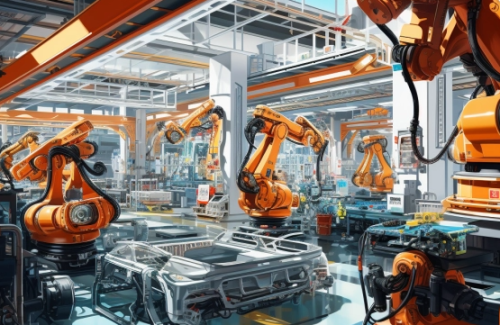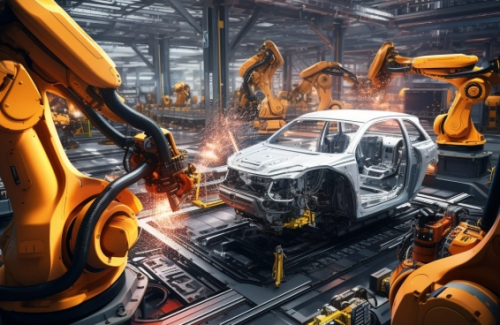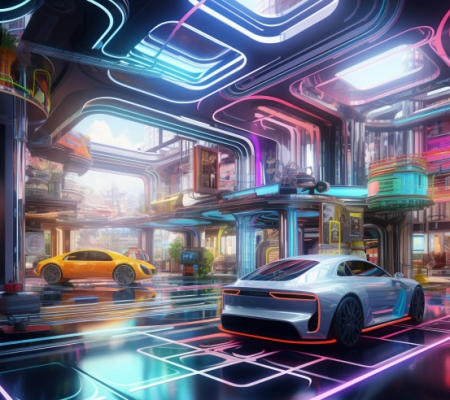Unit 3.1 Introduction to Finance
X-PENG LOOKS TO FUTURE GROWTH



Xpeng, a leading Chinese car manufacturer, is ramping up for a groundbreaking venture with its latest model, the P7. CEO He Xiaopeng is strategically eyeing the fiercely competitive electric car market, aiming to build a new factory to increase production of its new, flagship P7 model.
To support this ambitious endeavour, Xpeng invested heavily in a small, but state-of-the-art factory dedicated to producing the P7 model. The capital expenditure cost of this venture stands at a significant $120 million. This represents a huge spending on fixed assets (factory and robotics) which should increase efficiency (allow more cars to be built more speedily, but with fewer workers). These moves should increase the capital-intensive nature of the business, which would make X-Peng more attractive to future investors. The investment also brings the company in line with new ‘Green legislation’ of clean factories!
Financing this project will be done using a long-term bank loan secured against other fixed assets (collateral), such as the land and buildings the company already owns. Financing a large project like this requires the agreement of the board of directors to make sure that the additional borrowing (gearing) doesn’t increase the risk profile of the company too much.
Some investors worry about the risk of large new capital investment projects, but He Xiaopeng has assured investors the risk will yield a significant future return and boost the car manufacturers image and competitiveness, internationally!
Whilst capital expenditure is significant, there are also significant revenue expenditures that will have to be borne. In advance of the project, He Xiaopeng had to create a list of costs with the Finance Manager to examine the total costs of the project. The major items include the following;
A large advertising campaign, freight and delivery, wages and salaries of new employees at the factory, Insurance, machinery and robotics, computer systems, increased energy costs, raw materials and components & insurance.
KEY TERMS FROM THE CASE
QUESTIONS FROM THE CASE STUDY
Questions
- Define revenue expenditure [1]
- Identify one fixed asset from the case [1]
- Identify one potential risk from the project [1]
- Identify the source of finance for the project [1]
- Explain how fixed assets are used to secure the bank loan to finance the new factory [2]
- Explain how capital expenditure differs from revenue expenditure [2]
- Categorise from the last paragraph, the costs into revenue and capital expenditures [9]
- Explain two reasons that He Xiaopeng wishes to go ahead with the project [4]
SUGGESTED ANSWERS TO 3.1 INTRODUCTION TO FINANCE
Unit 3.1 Introduction to finance suggested answers
Define revenue expenditure [1]:
- Definition: Revenue expenditure refers to ongoing, day-to-day operational costs incurred by a business to maintain its regular activities and generate revenue. These costs are expensed in the income statement.
Identify one fixed asset from the case [1]:
- Example: Land and buildings (mentioned as collateral for the long-term bank loan).
Identify one potential risk from the project [1]:
- Example: The risk of additional borrowing (gearing) increasing the overall risk profile of the company.
Identify the source of finance for the project [1]:
- Answer: The source of finance for the project is a long-term bank loan secured against fixed assets (collateral).
Explain how fixed assets are used to secure the bank loan to finance the new factory [2]:
- Explanation: Fixed assets, such as land and buildings, act as collateral for the long-term bank loan. In the event of default, the bank can claim these assets to recover its funds, providing security and assurance for the lender.
Explain how capital expenditure differs from revenue expenditure [2]:
- Explanation: Capital expenditure involves significant spending on acquiring or improving fixed assets with long-term benefits, enhancing the business’s capacity. Revenue expenditure, on the other hand, covers day-to-day operational costs that contribute to short-term activities and are expensed immediately.
Categorise from the last paragraph, the costs into revenue and capital expenditures [9]:
- Categorization:
- Revenue Expenditures:
- Large advertising campaign
- Freight and delivery
- Wages and salaries of new employees at the factory
- Insurance
- Increased energy costs
- Raw materials and components & insurance
- Capital Expenditures:
- Machinery and robotics
- Computer systems
- Revenue Expenditures:
- Categorization:
Explain two reasons that He Xiaopeng wishes to go ahead with the project [4]:
- Reasons:
- Strategic positioning in the competitive electric car market.
- Anticipation of significant future returns and enhanced international competitiveness.
- Reasons:

